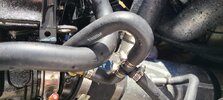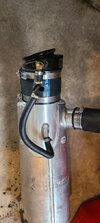Hello All, I had an alarm and error code on my 2012 seadoo wake 210, 430. The Boat goes into “limp home” mode and the alarm stays on. The P2428 code says it can be either a faulty exhaust temperature sensor, cooling system blockage, or improperly calibrated exhaust injection valve, or damaged circuits wires. There doesn't seem to be any water system blockage that I can observe or and visibly damaged wires. I can’t find the “exhaust injection valve” on the boat or in the Manuel. Does anyone know where it is located and how to calibrate? Any other suggestions?
Exhaust Gas Temperature overheating P2428
- Thread starter MDH19
- Start date
-
- Tags
- overheat exhaust p2428







